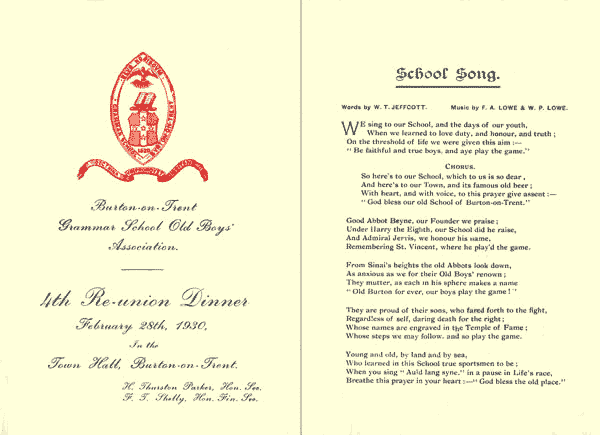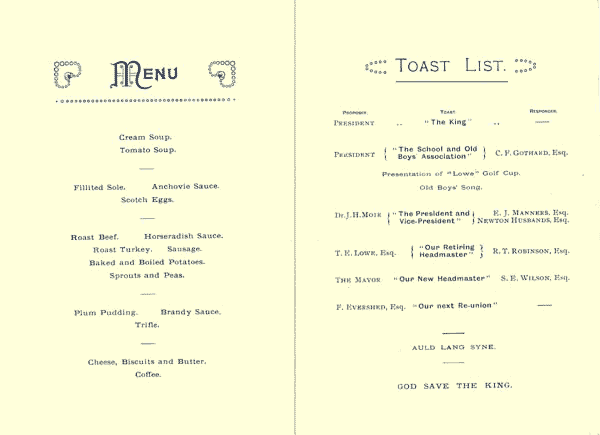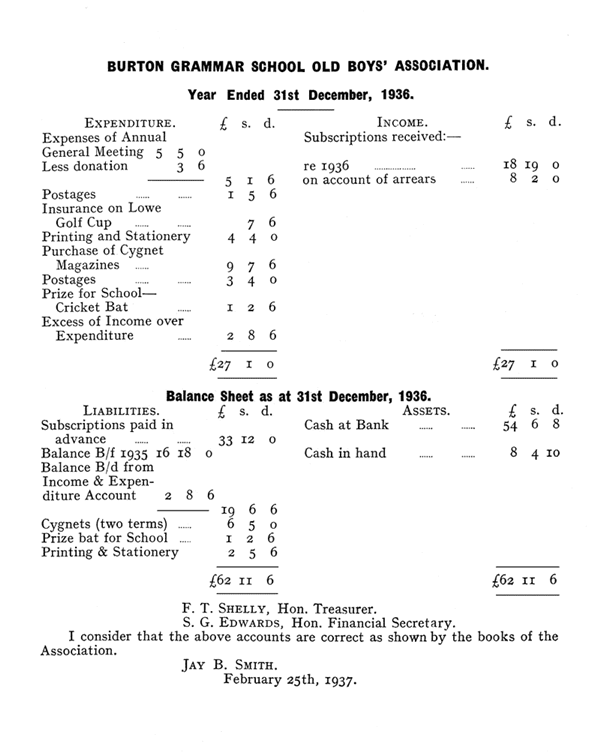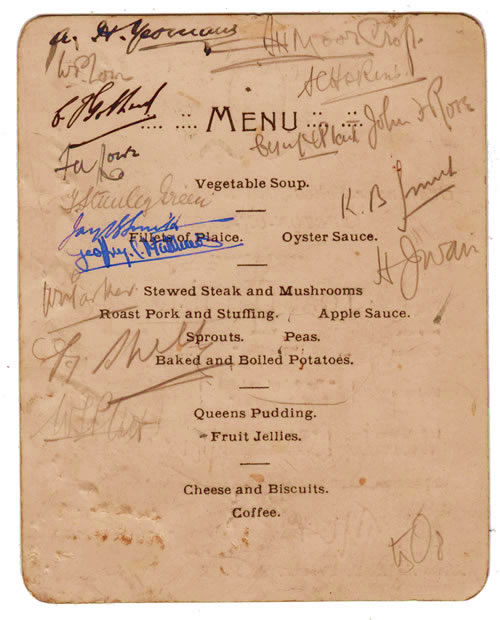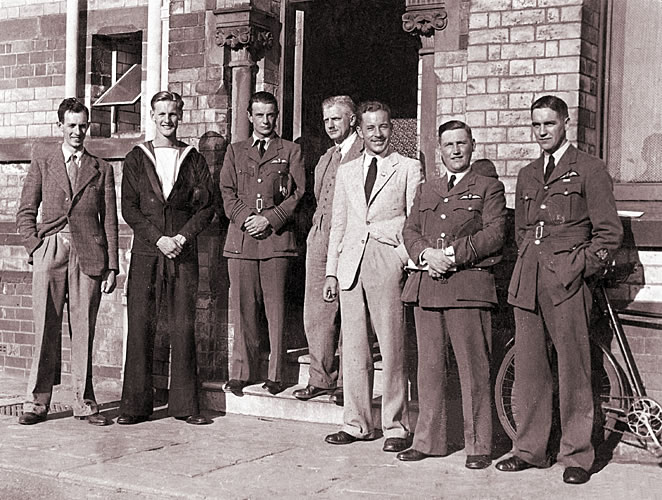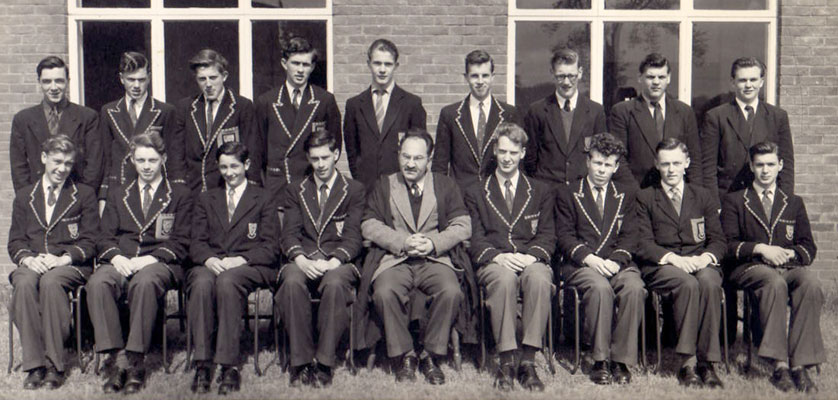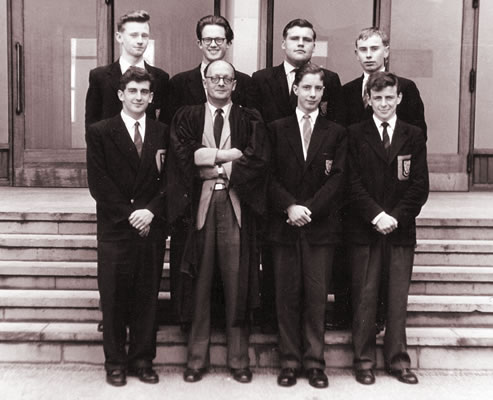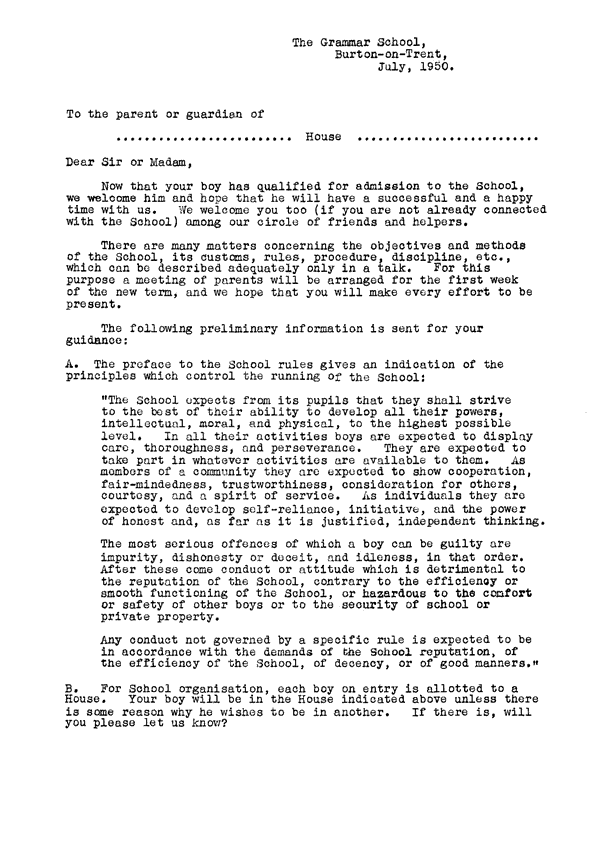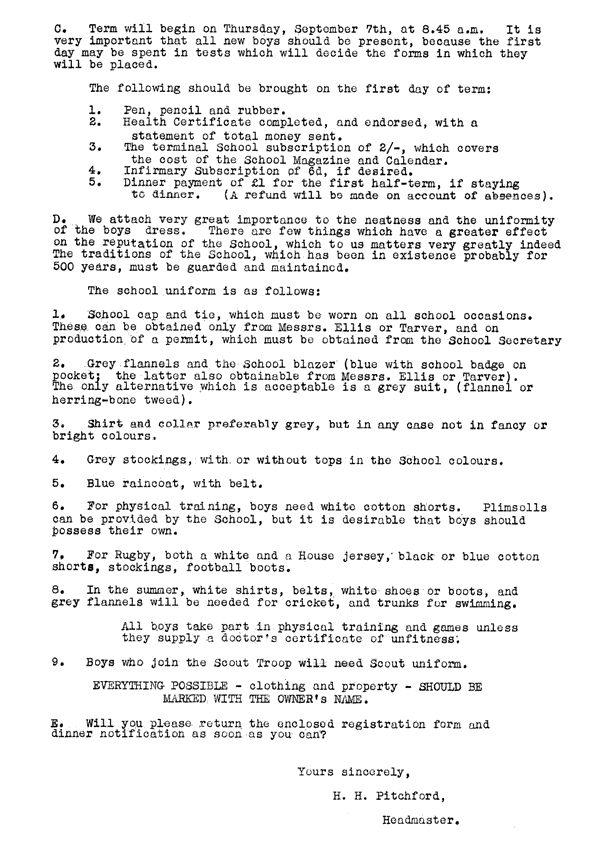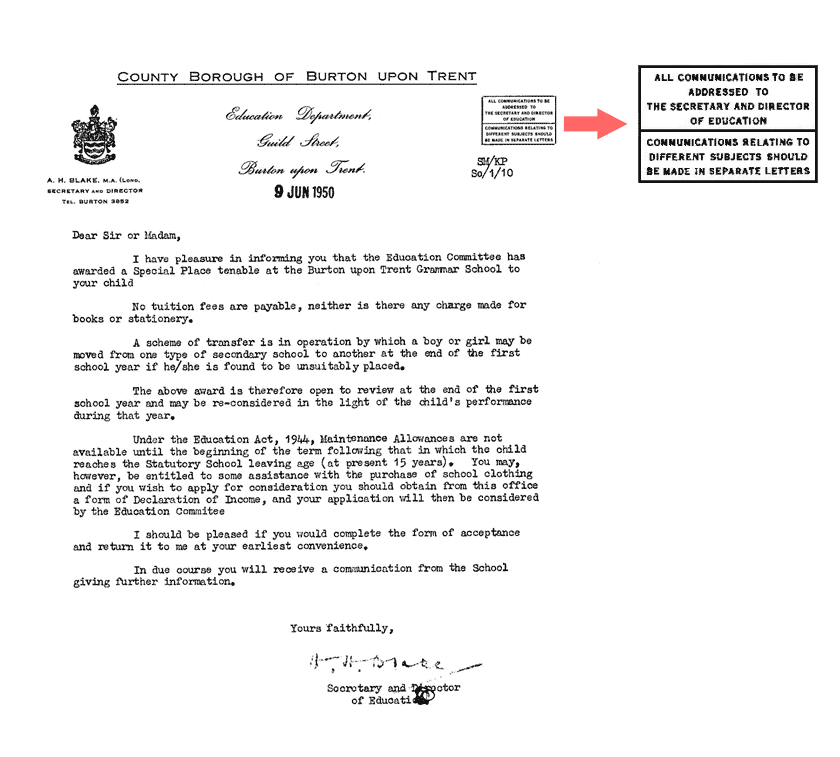Don Payne (1942-45): BGS as an Evacuee
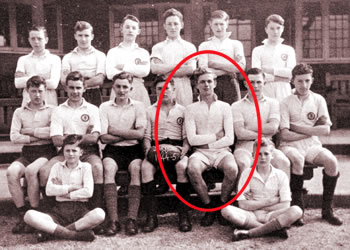 Having been bombed out in London’s East End in 1941, I was evacuated with my brother Dennis and my Mother to Newhall near Burton. We were billeted in a very small cottage in the back gardens of homes in Oversetts Rd. “Grandy Sabin one of the characters of Newhall was the tenant. He lived and slept in one downstairs room whilst we used all the other rooms. There was no bathroom and an outside toilet. The downstairs rooms must have been infested with cockroaches because if we returned home at night and switched the lights on there was a very large gathering of them in the middle of the floor! My primary school was in Newhall. In 1942 I had to take the London County Council entrance examination at the primary school and the paper was sent to the London Education Authority for assessment. Due to administrative delays my results were not processed until October 1942 and I was awarded a special place at Burton Grammar School; my London grammar school would have been Coopers Company Boys School in East London.
Having been bombed out in London’s East End in 1941, I was evacuated with my brother Dennis and my Mother to Newhall near Burton. We were billeted in a very small cottage in the back gardens of homes in Oversetts Rd. “Grandy Sabin one of the characters of Newhall was the tenant. He lived and slept in one downstairs room whilst we used all the other rooms. There was no bathroom and an outside toilet. The downstairs rooms must have been infested with cockroaches because if we returned home at night and switched the lights on there was a very large gathering of them in the middle of the floor! My primary school was in Newhall. In 1942 I had to take the London County Council entrance examination at the primary school and the paper was sent to the London Education Authority for assessment. Due to administrative delays my results were not processed until October 1942 and I was awarded a special place at Burton Grammar School; my London grammar school would have been Coopers Company Boys School in East London.
I enrolled at Burton Grammar on 23rd October 1942 and was immediately in trouble with French language having missed the first few weeks of lessons. My early impression of Horace Pitchford (History) was of a dapper but fierce master who did not suffer fools gladly! During my first few months at school I managed second place behind Brian Fretwell in the Junior Cross Country race and we were both awarded our Athletic Colours. This helped me integrate into school life very quickly as I was recognised by Masters and senior boys of the school.
I never carried a gas mask although we had them at home. Assembly was in the main hall, in form order and Tom Parkin Senior Master would scowl at any one making too much noise before we were addressed by the “Beak” Mr. Harold Moodey. Tom Parkin, for all his serious exterior, frequently had a half smile on his face as if to say “I know what boys can be like”. Masters and Prefects could give detention for various misdemeanours which required attendance on Saturday morning to complete set work. Morning and afternoon breaks were in the rather small playground. The tuck-shop opposite the main entrance, run by Lily and Gertie provided smashing current buns and they did brisk business. For mid-day meals we sat on benches at long tables in the Hall. Food was still plentiful and I frequently went up for seconds if they were available.
I do not think the school had an air raid shelter as I never visited one during my time. Emeny air raids were at night when they bombed Coventry, Birmingham, and Derby (Rolls Royce) and other industrial cities. You could hear the anti aircraft guns and the steady drone of enemy bombers. Blackout of all lights was enforced with shaded headlights on vehicles and black curtains which had to be drawn when lights were switched on. In the later part of the war we saw plenty of large formations of American bombers and fighters that were carrying out daylight bombing missions over enemy territory.
Discipline at school was strict but fair. All boys had to wear the school hat and tie and touch their hat when acknowledging a member of staff out of school. I never had a school blazer as family finances were tight. The annual Speech Day took place in the Town Hall. I believe all the school attended and the Masters wore their gowns with University colours. Awards were made for various achievements during the academic year and consisted of books with a label inside indicating the proficiency and signed by the Headmaster. During my stay I was taught variously by Connie Illsey, Polly Lownds, Miss Selby, Jake Hammond, Bill Read, Ronnie Illingworth, Joey Daffern, George Cooper, Chazzer Brown, and Horace Pitchford. Although I was not taught by Mr. Moodey I did make his acquaintance when receiving “six of the best” for some demeanour in my first year! Sporting activities consisted of Rugby, Cricket, Athletics and Swimming. There were regular matches against other schools including Trent College, Denstone College, K.E.S. Aston, K.E.S. Birmingham and Repton. These were limited because of transport difficulties. Inter House matches were introduced during the war to stimulate competition and were mainly played on Wednesday afternoons and Saturday mornings.
As a member of the air scouts we had the opportunity to cycle to Fradley airfield which was an Officer Training Unit. They used Wellington Bombers for training which consisted mainly of “circuits and bumps” continuingly landing and taking off for about two hours. If flying was taking place that day you drew a parachute and when the plane was ready you climbed aboard and had a rather bumpy flight for two hours. It was just too bad if you felt sick as you could not get off! There were a number of clubs at the school which met after school hours.
Any boy at the school during 1944 will remember the explosion when the ammunition dump at 21 MU RAF Fauld near Hanbury blew up.4,000 tons of bombs blasted a crater 400ft deep and three quarters of a mile long. One farm with all buildings, wagons, horse, cattle and six people disappeared. It happened on 27th November 1944,was the largest explosion during both World Wars, and killed seventy people, eighteen of which were never found. At the time, just past eleven, Chazzer Brown was taking my class for Geography. There was a muffled rumble and all the lights in the room rattled. Chazzer, quite unruffled just got on with the lesson. Later that week I cycled to the area and many of the local roads had large clods of earth littered about that had been deposited by the blast. The area was cordoned off and even in 2004 sections of land are cordoned off due to unexploded bombs.


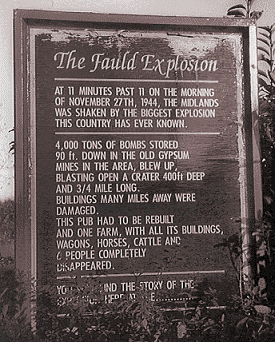 It was just after 11 o’clock on a foggy Monday morning,the 27th November 1944. As a ten year old boy I sat at my desk in ‘A’ room at the Burton Grammar School. I thought that I was about to faint. Without any noise at all my desk seemed to rise up towards me, or perhaps I was going down towards it. A very strange sensation was soon gone but quickly the whole class realised we had all experienced the same feeling. From the floor upstairs came a noise of the whole class there scrambling under their desks. Around lunchtime the rumours were well established and it was only later that we found out that the ‘Dump’ had gone up.
It was just after 11 o’clock on a foggy Monday morning,the 27th November 1944. As a ten year old boy I sat at my desk in ‘A’ room at the Burton Grammar School. I thought that I was about to faint. Without any noise at all my desk seemed to rise up towards me, or perhaps I was going down towards it. A very strange sensation was soon gone but quickly the whole class realised we had all experienced the same feeling. From the floor upstairs came a noise of the whole class there scrambling under their desks. Around lunchtime the rumours were well established and it was only later that we found out that the ‘Dump’ had gone up.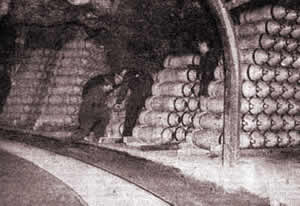 On the way home I stopped to take train numbers but there was still a dense fog and we heard the endless sounds of emergency vehicles going to the local hospital that was just down the road from us. I remember the eerieness of everything drove me home.
On the way home I stopped to take train numbers but there was still a dense fog and we heard the endless sounds of emergency vehicles going to the local hospital that was just down the road from us. I remember the eerieness of everything drove me home.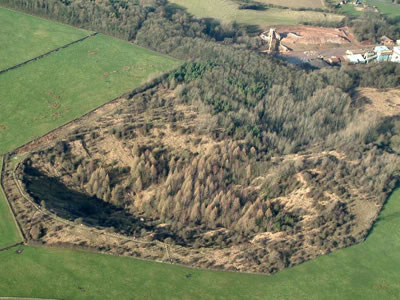 Sixty-eight people lost their lives in a bang which took out the crater, (which was some 90 feet deep and covering an area of 12 acres) in a second. A whole farm with buildings implements and stock vanished without trace. A thousand acres of topsoil was redistributed, some up to 11 miles away.
Sixty-eight people lost their lives in a bang which took out the crater, (which was some 90 feet deep and covering an area of 12 acres) in a second. A whole farm with buildings implements and stock vanished without trace. A thousand acres of topsoil was redistributed, some up to 11 miles away.